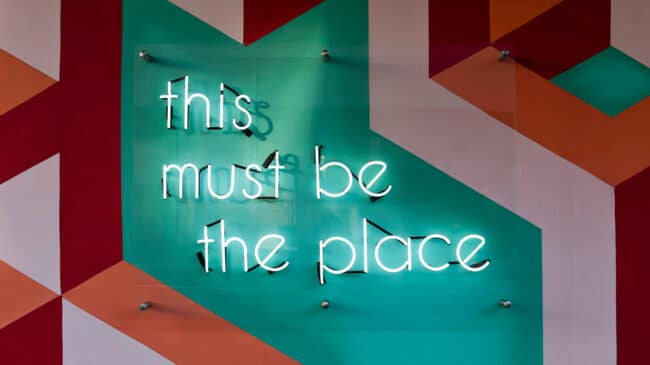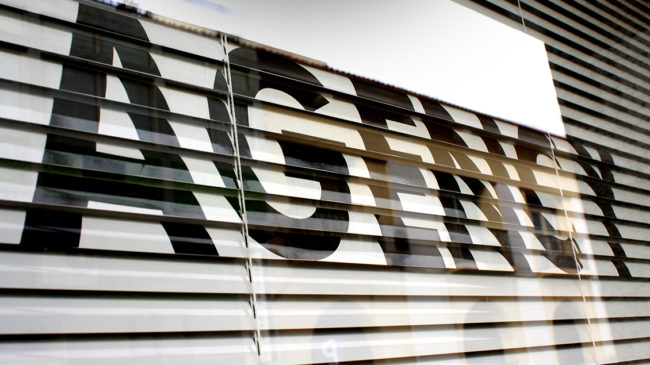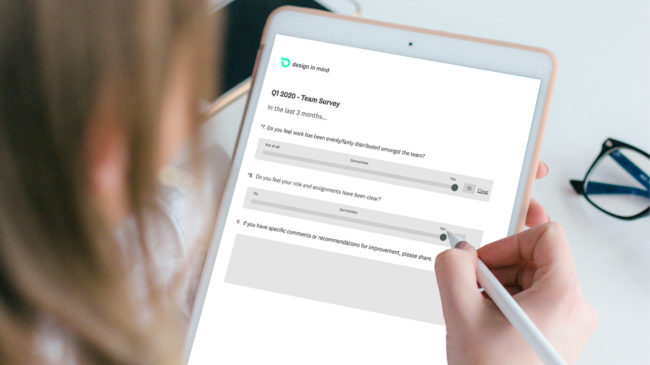5 ways to use company culture to strengthen your small business

It’s no secret that employee engagement and satisfaction are vital to company success, but showering employees with perks can be challenging for small businesses with an eye on the bottom line. Fortunately, the key to employee satisfaction is positive company culture–and it’s attainable at every budget.
Company culture is a big concept, but it’s essentially how your employees show up for their teams, engage with their work, and feel about their job. Or more formally, it’s the “shared beliefs and values established by leaders and then communicated and reinforced through various methods, ultimately shaping employee perceptions, behaviors, and understanding” (Society for Human Resource Management).
Small businesses have unique advantages and challenges when it comes to building company culture. Here, we share five ways that we built a more positive culture for our team.
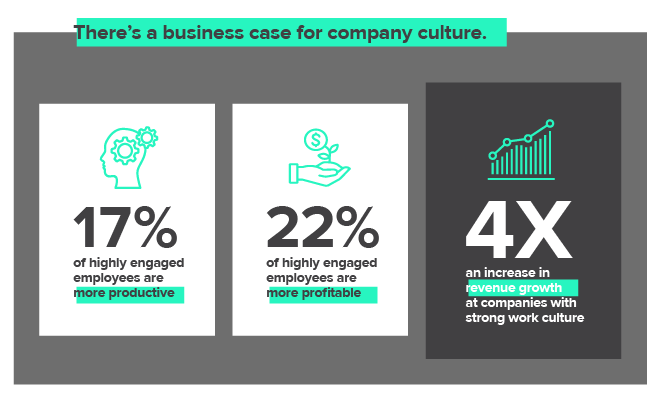
What makes small business culture different?
In big business, company culture is often conflated with attractive perks. From catered lunches and ping-pong tables to kegs of IPA and private shuttles, major money goes into making sure employees want for nothing. And if perks are the key to employee satisfaction, small business just can’t compete.
Luckily, employee engagement goes way beyond benefits. Though benefits are doubtlessly important, a job also contributes to a sense of identity for 51% of workers. Respect and connection in the workplace are key, and this is where small businesses shine.
Small businesses are collaborative by nature. Every person plays a significant role in keeping business moving at speed, and teamwork is crucial to success. You probably don’t need a study to tell you why feeling a sense of belonging to a team is important–as humans, we are hardwired for connection. In the workplace, closer relationships translate to higher levels of satisfaction, less stress, more happiness, and more loyalty, just to name a few mental and emotional perks (and yes, occasional catered lunches help, too).
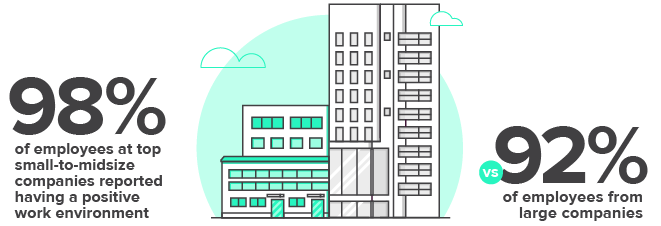
How to build company culture and strengthen your small business
The path to achieving a thriving company culture is different for everyone, but here are some things that have worked for us. These five tips have not only helped define our culture, but have also become some of our greatest differentiators.
1. Lean on your values.
Identify and define what is important to your team. What do you care about? Why does it matter? Highlight the things that set your company apart and clearly express your vision. When you prioritize what matters most, you will attract like-minded talent and build a team that’s united with common goals.
Once you establish your values, live them. At Design in Mind, we value giving back to the community and bring that to life with Design in Kind, our philanthropy program that donates up to $25K worth of design work to benefit multiple nonprofits each year. This act of generosity, in addition to the volunteer hours our team commits to local charities each year, strengthens our community and helps employees feel proud of the work they’re doing.
2. Hire thoughtfully.
In small business, every hire is important and has the potential to change the office dynamic. Identify the best candidates based not only on skill, but also on character and fit by asking thoughtful interview questions that create a personal connection. Inquire about applicants’ ideal work environment, experiences in collaborative roles, and openness to on-the-job learning.
Be especially thoughtful when it comes to hiring management, as managers account for 70% of variance in team engagement. Strong leaders are the foundation of a positive culture and help drive growth. Hire people who demonstrate empathy, vision, and accountability in line with your company’s standards.
3. Invest in your employees.
According to a 2018 LinkedIn study, 93% of employees would stay at a company longer if it invested in their careers. Offering workshops in key skills for your industry–plus soft skills such as leadership and communication–not only strengthens your team’s capabilities, but also enhances their workplace satisfaction. Because employee retention and ability are two of your organization’s biggest assets, investing in their individual growth is the ultimate ROI.
In addition, allow your employees to balance work with personal priorities through workplace flexibility policies. These policies not only benefit your employees, but are also good for your business. 72% of talent professionals agree that flexible policies like a weekly WFH day and generous PTO are important for attracting and retaining talent–offering remote work options has even been shown to increase productivity by 13% and reduce turnover by 50%.

4. Embrace candid feedback.
Empower your employees with regular check-ins to find out where they feel stuck, what they are proud of, and where they want to improve. Then, work together to set clear, achievable goals. Not only do regular check-ins keep projects on track and clients happy, but they also build positive company culture: employees who directly participate in goal setting are 4X more likely to feel engaged at work.
Business owners and managers need to demonstrate openness to feedback, too. Remember, leaders set the tone for the company. Create regular opportunities for honest feedback, and then use that information to tweak workplace culture and operations to support mutual growth.
At Design in Mind, we host formal check-ins every few months and gauge employee satisfaction on an ongoing basis. As a result, we’ve seen a boost in productivity and team morale. Feedback is crucial to growth, and learning as a team helps us all achieve more.

5. Get the team out of the office.
Spending out-of-office time with your team is important for building relationships. It gives you common ground away from your desks, ultimately strengthening in-office chemistry. Step away from your screens for something as simple as a coffee run or as elaborate as an interactive workshop—as long as the team is spending time together.
A few examples of quality time together at Design in Mind include bi-weekly happy hours, lunches, and mid-day walks. We make a habit of celebrating milestones and rewarding individuals for their hard work, and also plan special team-building activities that take us away from our screens. From cooking classes to graffitiing a wall (legally), time outside of the office has brought us closer as a team.
Sources:
- https://www.gallup.com/workplace/236927/employee-engagement-drives-growth.aspx
- https://www.forbes.com/sites/johnkotter/2011/02/10/does-corporate-culture-drive-financial-performance/#7aec6f6e7e9e
- https://www.gallup.com/workplace/236366/right-culture-not-employee-satisfaction.aspx
- https://www.globoforce.com/press-releases/globoforce-shrm-human/
- https://business.linkedin.com/talent-solutions/blog/trends-and-research/2016/5-Employee-Feedback-Stats-That-You-Need-to-See







